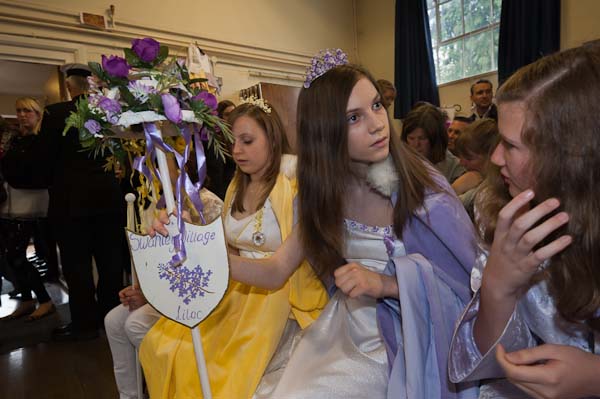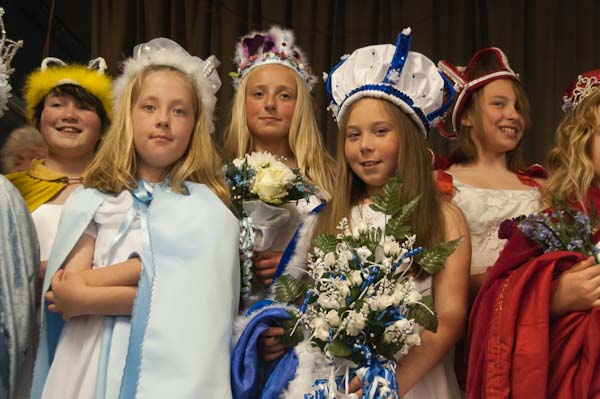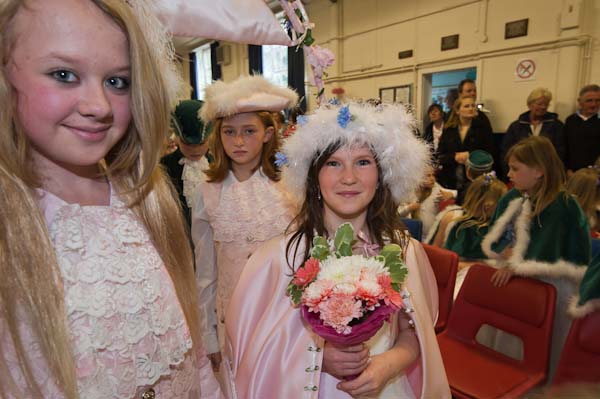Writing about ‘The New Thinking’ on copyright and the National Photography Symposium reminds me that I’ve not mentioned at all here what I was doing that weekend. Apart of course from drowning my sorrows after the election results.
Saturday 8 of May I didn’t get drowned but I did get rather damp, as it poured down on several occasions. I’d hoped to be on Hayes Common, and so had around a thousand other people, for the Merrie England and London May Queen Festival, but it was far too wet for that. The event went ahead, but in a rather smaller format with many fewer people present in the Village Hall.
I’ve been photographing various May Queen events in London, including this, since 2005, and have more than enough material for a book or an exhibition about them. One show already promised was then cancelled apparently on cost grounds, perhaps an early victim of the recession, but I’m hopeful of getting another. And its definitely one of the things on my short list for a Blurb publication if I can’t find another publisher (although that short list is getting rather long.)
I’d actually not been thinking of going to Hayes this year, as I should have been at a conference (not the NPS but another one) but an e-mail inviting me made me change my mind. We missed you last year it said, and so I changed my mind and decided to go.
Despite my getting soaked on the way there, it turned out to me a good decision, as being packed into a small hall gave the event a different atmosphere and of course a different look. It’s nicer when the sun is out and everyone is having fun and dancing around – and of course much nicer for the girls and families involved – but the wet weather did give me something new. Not the best pictures I’ve taken of these events, but something that widens the work.
Photographing events like this does very much involve getting to know people and establishing trust. Working in the closer atmosphere (in every sense) did I think help me to talk to people and get to know them a little better. There are perhaps a few more things I may want to do in this project and this will make them easier.
I wasn’t sure whether to use flash or rely on a highish ISO inside the hall. The lighting was about as mixed as you could get – overcast grey sky through largish windows and fluorescents and some stage lighting. In parts of the hall it was bright enough to work at ISO 1600 but there were plenty of darker corners.
I took a few without flash, but the colour on the back of the camera didn’t look too encouraging and I decided to switch the flash on. That way I could reduce the ISO a bit, with the flash as the main light source, but still picking up enough ambient to give reasonably even overall lighting. Most of the pictures were taken on the Nikon 16-35mm at 1/30 f6.3. I would have been better off at 1/60 as I lost quite a few images through both camera shake and, more often, subject movement, and could well have increased the ISO as I was working with the D700. Though there are a few where I’ve actually panned a little with the moving subject thanks to the slow shutter speed that I quite like.

If I’d known before I left that I would be working inside, I would also have taken the Sigma 24-70 f2.8, which I’d got back a few days earlier (a new lens as replacement for one that Sigma had been unable to fix) but I’d left it at home. I’d also have brought a second SB800 flash which I could have used on the D300 body; I had the Nikon 18-200mm on that but didn’t take many pictures with it.
The hall was too high for bounce, so I was using direct flash for all the pictures. So long as there is plenty of ambient fill I usually find the results quite acceptable. In the hot shoe, the SB800 puts the flash about six inches above the centre of the lens. Usually I use the built-in diffuser screen with wide-angles to get more even light distribution, though sometimes I like the little bit of vignetting you can get without it.

One little thing I find helpful when there is someone very close to the camera on one side of the image is to twist the flash head away from them. Otherwise it can be hard to burn them down to an acceptable level in processing.

And processing is something that can greatly improve flash images, often allowing you to make the lighting rather more event when parts of the subject are at different distances from the camera. People often don’t realise that I’ve used flash, and photographers sometimes ask why the lighting in my pictures is usually more even than theirs. I sometimes tell them that I prayed to the great god Ansel and was granted a special derogation from the inverse square law.
Of course there are many more pictures on My London Diary. It’s one of those events where it’s deliberately a very loose edit, because during the event I handed my card to many of the mothers and the people taking part all want to see pictures of themselves and their friends.